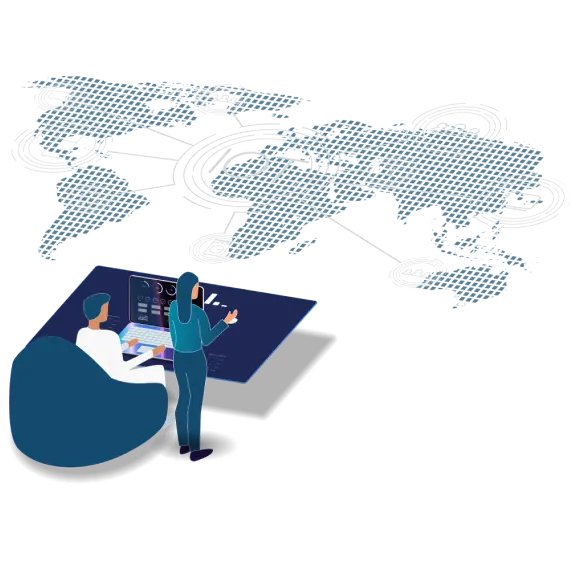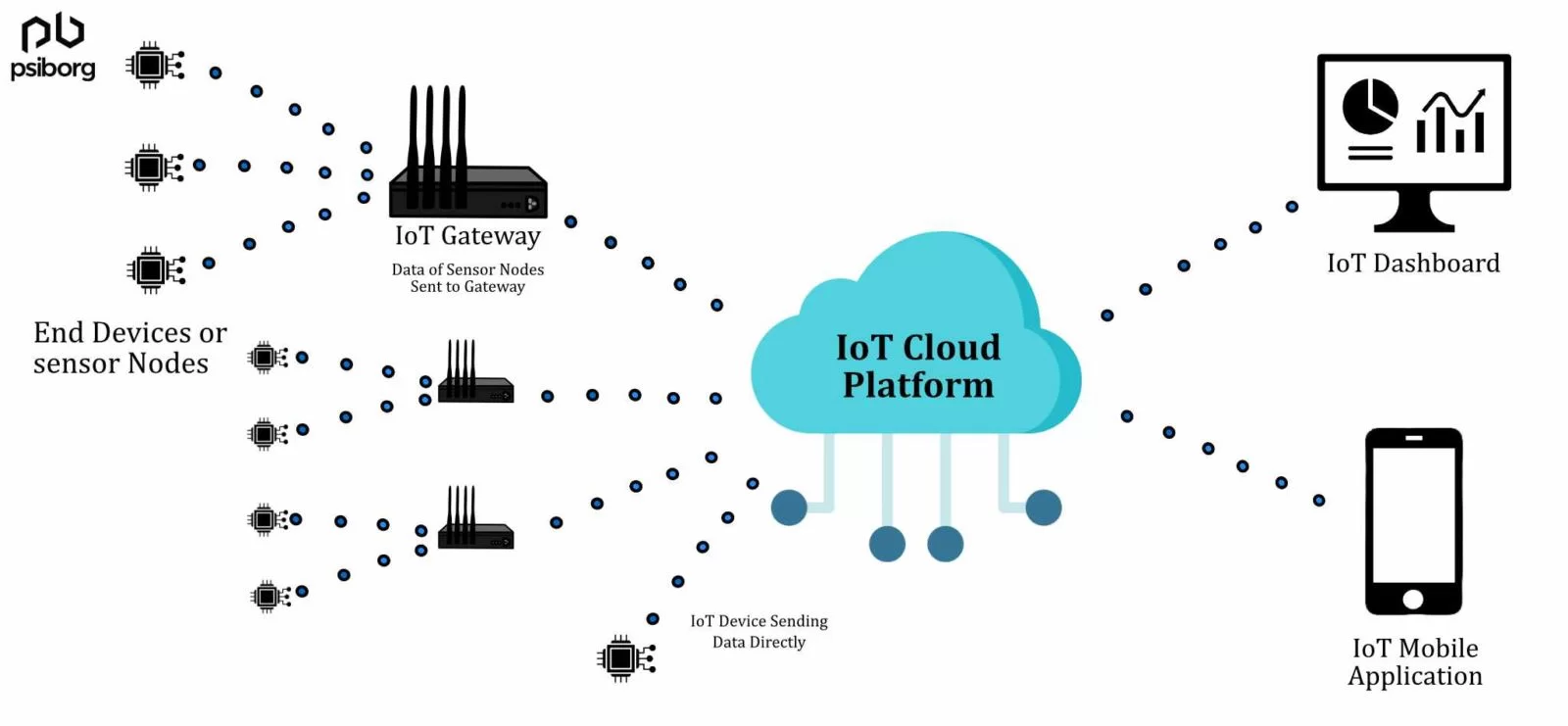Revolutionizing Connectivity: The Ultimate Guide To IoT Platform Remote Access
Listen up, folks! If you're diving into the world of smart technology and digital transformation, then you're probably hearing a lot about IoT platform remote access. This isn't just some fancy buzzword—it's a game-changer for businesses, tech enthusiasts, and anyone looking to stay ahead in the digital age. Imagine being able to control your smart devices, monitor systems, and manage data from anywhere in the world. That's the power of IoT remote access, and it’s here to stay.
But hold up—before we get too deep into the nitty-gritty, let’s break it down for those who might still be scratching their heads. IoT, or the Internet of Things, is all about connecting devices to the internet and each other. Now, when you add remote access to the mix, you're talking about the ability to interact with these connected devices from afar. It’s like having a remote control for your entire digital ecosystem, and trust me, it’s as cool as it sounds.
So, whether you're a business owner looking to streamline operations, a tech enthusiast eager to explore new possibilities, or simply someone curious about the future of connectivity, this guide’s got you covered. We’re diving deep into what IoT platform remote access is, how it works, its benefits, and even some potential challenges. Let’s get started, shall we?
Table of Contents
- What is IoT Platform Remote Access?
- How Does IoT Remote Access Work?
- Benefits of IoT Platform Remote Access
- Challenges and Solutions in IoT Remote Access
- Security Concerns in IoT Platform Remote Access
- Top IoT Remote Access Platforms
- Use Cases and Applications of IoT Remote Access
- Future Trends in IoT Platform Remote Access
- Data and Statistics on IoT Remote Access
- Conclusion: Why IoT Remote Access Matters
What is IoT Platform Remote Access?
Alright, let’s start with the basics. IoT platform remote access is essentially the ability to manage, monitor, and interact with IoT devices from a distance. Think of it like this: you’ve got a network of smart devices—cameras, sensors, thermostats, industrial equipment—all connected to the internet. With remote access, you can control these devices, check their status, and even troubleshoot issues without having to physically be in the same location.
This technology is built on a combination of cloud computing, secure communication protocols, and user-friendly interfaces. It’s not just about convenience; it’s about efficiency, scalability, and real-time data access. Whether you're running a smart home, managing a fleet of autonomous vehicles, or monitoring critical infrastructure, IoT remote access gives you the power to stay in control no matter where you are.
And here’s the kicker—it’s not just for big corporations anymore. Small businesses, startups, and even individual users are leveraging IoT remote access to enhance their operations and improve their quality of life. So, whether you’re a tech wizard or a newbie, there’s something in this for everyone.
How Does IoT Remote Access Work?
Now that we’ve got the “what” out of the way, let’s talk about the “how.” IoT remote access works by establishing a secure connection between your devices and a centralized platform or server. Here’s a quick breakdown:
- Device Connectivity: Your IoT devices are connected to the internet, either directly or through a gateway.
- Cloud Integration: Data from these devices is sent to a cloud-based platform where it’s stored, analyzed, and made accessible.
- User Interface: You interact with your devices through an app, dashboard, or web portal, which communicates with the cloud platform.
- Security Protocols: To ensure everything stays safe and secure, encryption, authentication, and other security measures are put in place.
It’s like building a digital bridge that connects your physical devices to the virtual world. And with advancements in 5G, edge computing, and AI, this bridge is getting stronger and faster every day.
Key Components of IoT Remote Access
Before we move on, let’s quickly highlight some of the key components that make IoT remote access possible:
- Sensors: These collect data from the environment and send it to the cloud.
- Gateways: Act as intermediaries between devices and the internet.
- Cloud Platforms: Store and process data, enabling remote access.
- APIs: Allow different systems and applications to communicate seamlessly.
Got it? Good. Now let’s dive into why this technology is such a big deal.
Benefits of IoT Platform Remote Access
Here’s where things get really exciting. IoT remote access isn’t just a cool tech feature—it offers a whole host of benefits that can revolutionize the way we live and work. Let’s break it down:
1. Increased Efficiency
With remote access, you can automate tasks, monitor performance, and make adjustments in real-time. This means less downtime, fewer manual interventions, and more productive use of your resources.
2. Cost Savings
Reducing the need for on-site visits and manual maintenance can lead to significant cost savings. Plus, with better data insights, you can optimize operations and avoid costly mistakes.
3. Scalability
IoT remote access makes it easy to scale your operations up or down as needed. Whether you’re managing a few devices or thousands, the right platform can handle it all.
4. Improved Decision-Making
Access to real-time data and analytics empowers you to make informed decisions quickly. This is especially valuable in industries like manufacturing, healthcare, and logistics.
So, whether you’re looking to boost productivity, cut costs, or gain a competitive edge, IoT remote access has got you covered.
Challenges and Solutions in IoT Remote Access
Of course, no technology is without its challenges. IoT remote access is no exception. Here are some common hurdles and how to overcome them:
Challenge 1: Connectivity Issues
Solution: Invest in reliable network infrastructure and consider using edge computing to reduce latency and improve performance.
Challenge 2: Data Overload
Solution: Implement data analytics tools to filter and prioritize the most important information. Focus on actionable insights rather than raw data.
Challenge 3: Integration Complexity
Solution: Choose platforms that offer seamless integration with existing systems and devices. Look for solutions that support a wide range of protocols and standards.
By addressing these challenges head-on, you can ensure a smooth and successful implementation of IoT remote access.
Security Concerns in IoT Platform Remote Access
Let’s talk about the elephant in the room—security. With so many devices connected to the internet, the risk of cyberattacks and data breaches is a very real concern. Here are some best practices to keep your IoT remote access system secure:
- Use Strong Authentication: Implement multi-factor authentication to protect access to your devices and data.
- Encrypt Data: Ensure all data transmissions are encrypted to prevent unauthorized access.
- Regular Updates: Keep your devices and software up to date with the latest security patches.
- Network Segmentation: Isolate IoT devices from your main network to limit potential damage in case of a breach.
Remember, security isn’t a one-time fix—it’s an ongoing process. Stay vigilant and proactive to protect your digital assets.
Top IoT Remote Access Platforms
Now that you know the ins and outs of IoT remote access, let’s look at some of the top platforms that can help you get started:
1. AWS IoT
Amazon Web Services offers a robust platform for building, deploying, and managing IoT applications. With features like device management, analytics, and machine learning, AWS IoT is a powerful choice for businesses of all sizes.
2. Microsoft Azure IoT
Azure IoT provides a comprehensive suite of tools for connecting, monitoring, and managing IoT devices. Its integration with other Microsoft services makes it a great option for enterprises already using the Microsoft ecosystem.
3. Google Cloud IoT
Google’s platform focuses on data analytics and machine learning, making it ideal for organizations looking to derive insights from their IoT data. Its scalability and flexibility are hard to beat.
There are plenty of other platforms out there, each with its own strengths and weaknesses. The key is to choose one that aligns with your specific needs and goals.
Use Cases and Applications of IoT Remote Access
So, how exactly is IoT remote access being used in the real world? Let’s explore some exciting use cases:
1. Smart Homes
From controlling your lights and thermostat to monitoring your security cameras, IoT remote access is transforming the way we interact with our homes.
2. Industrial Automation
In manufacturing, remote access allows for real-time monitoring of equipment, predictive maintenance, and streamlined production processes.
3. Healthcare
Remote patient monitoring, telemedicine, and connected medical devices are just a few examples of how IoT is revolutionizing healthcare.
4. Agriculture
Farmers are using IoT to monitor soil conditions, weather patterns, and crop health, leading to more efficient and sustainable farming practices.
These are just a few examples, but the possibilities are endless. IoT remote access is making waves across virtually every industry.
Future Trends in IoT Platform Remote Access
Looking ahead, the future of IoT remote access is bright. Here are some trends to watch:
1. Edge Computing
As more data is generated at the edge of the network, edge computing will play an increasingly important role in IoT remote access.
2. AI and Machine Learning
These technologies will enhance data analysis and automation, making IoT systems smarter and more efficient.
3. 5G Connectivity
The rollout of 5G networks will enable faster, more reliable connections, paving the way for even more advanced IoT applications.
Stay tuned for these and other exciting developments in the world of IoT remote access.
Data and Statistics on IoT Remote Access
To give you a better idea of the impact of IoT remote access, here are some key statistics:
- By 2025, it’s estimated that there will be over 75 billion IoT devices connected worldwide.
- The global IoT market is projected to reach $1.1 trillion by 2026.
- Remote access capabilities are expected to drive significant growth in IoT adoption across various industries.
These numbers speak volumes about the potential of IoT remote access to shape the future of technology and business.
Conclusion: Why IoT Remote Access Matters
And there you have it, folks—a comprehensive look at IoT platform remote access and why it matters. From enhancing efficiency and reducing costs to driving innovation and growth, this technology is transforming the way we live and work.
So, what’s next? If you’re ready to take the plunge into the world of IoT remote access, start by identifying your needs and goals. Research the available platforms, consider security best practices, and don’t be afraid to experiment. The future is here, and it’s connected.
Got thoughts or questions? Drop a comment below, share this article with your network, and let’s keep the conversation going. Together, we can unlock the full potential of IoT remote access and shape a smarter, more connected world. Cheers!


